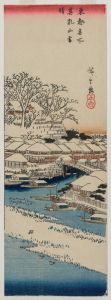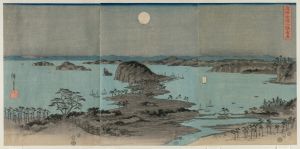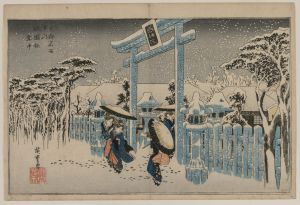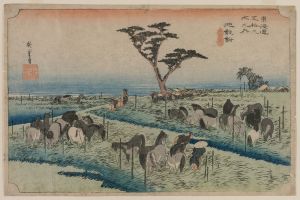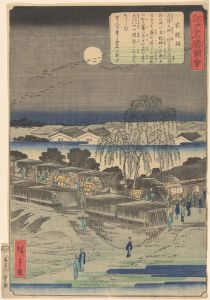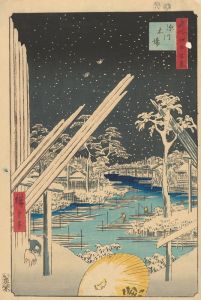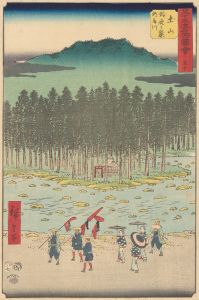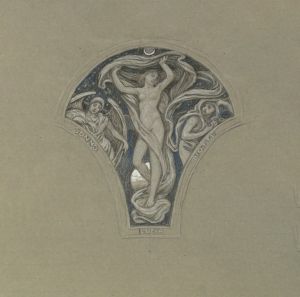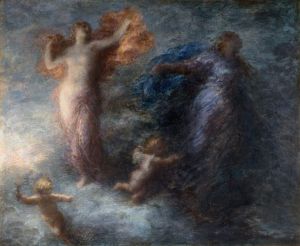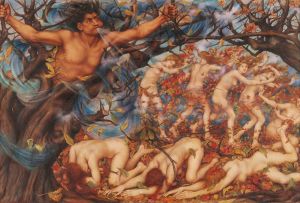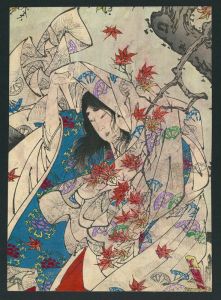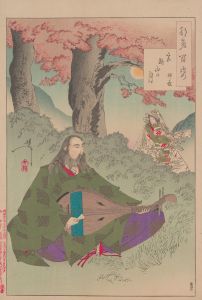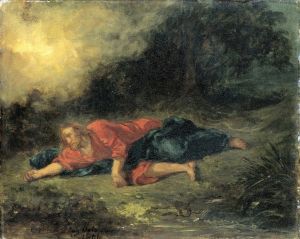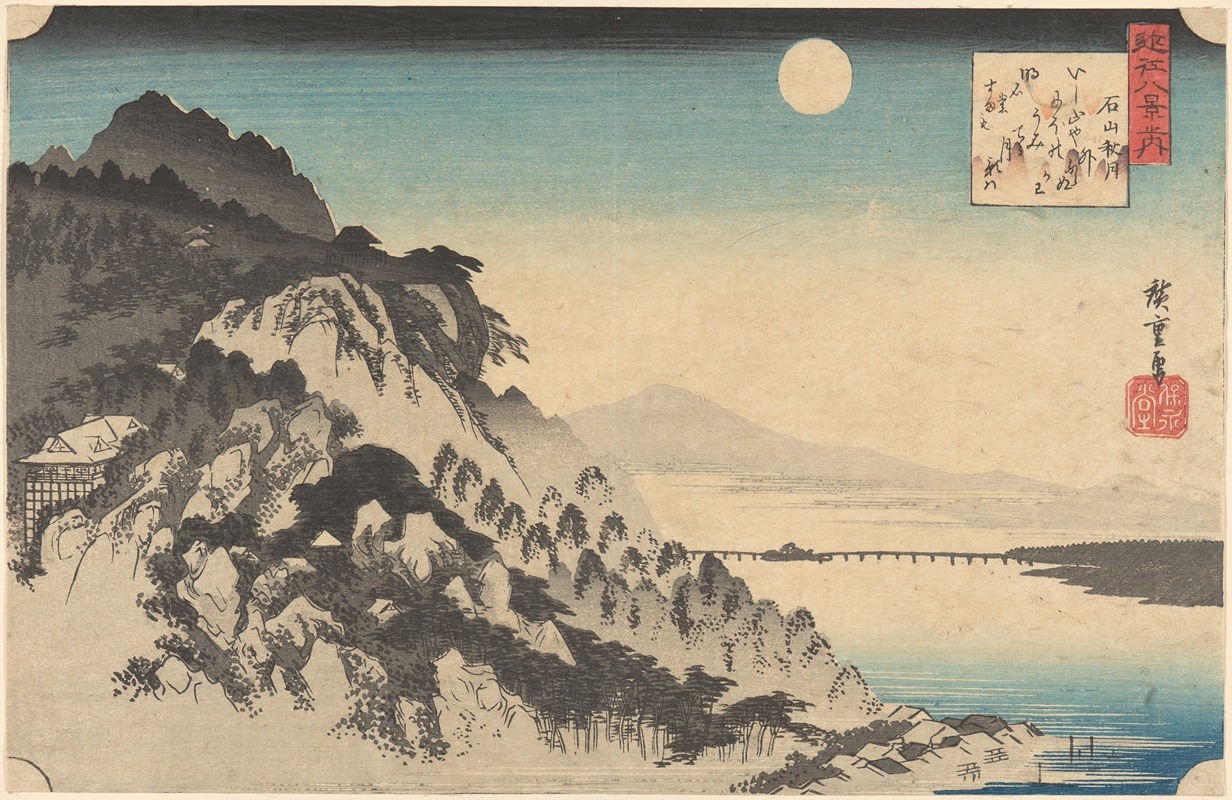
Autumn Moon at Ishiyama
A hand-painted replica of Andō Hiroshige’s masterpiece Autumn Moon at Ishiyama, meticulously crafted by professional artists to capture the true essence of the original. Each piece is created with museum-quality canvas and rare mineral pigments, carefully painted by experienced artists with delicate brushstrokes and rich, layered colors to perfectly recreate the texture of the original artwork. Unlike machine-printed reproductions, this hand-painted version brings the painting to life, infused with the artist’s emotions and skill in every stroke. Whether for personal collection or home decoration, it instantly elevates the artistic atmosphere of any space.
Andō Hiroshige, a renowned Japanese ukiyo-e artist of the Edo period, is celebrated for his landscape prints and depictions of nature. One of his notable works is "Autumn Moon at Ishiyama," which is part of his series "Eight Views of Ōmi" (Ōmi Hakkei). This series is inspired by the traditional Chinese theme of the "Eight Views," which was adapted by Japanese artists to depict famous scenic spots in Japan.
"Autumn Moon at Ishiyama" captures the serene beauty of Ishiyama-dera, a Buddhist temple located near Lake Biwa in Ōtsu, Shiga Prefecture. Ishiyama-dera is historically significant and is known for its association with the famous Heian period author Murasaki Shikibu, who is said to have begun writing "The Tale of Genji" at this temple. The temple is situated on a hill, providing a picturesque view of the surrounding landscape, which Hiroshige masterfully captures in his print.
In this artwork, Hiroshige employs his characteristic use of color and composition to evoke the tranquil atmosphere of an autumn evening. The print features a full moon illuminating the night sky, casting a gentle glow over the temple and the surrounding landscape. The use of soft blues and greens, along with the delicate depiction of clouds and foliage, creates a harmonious balance that is both calming and evocative.
Hiroshige's ability to convey the essence of a scene through his use of perspective and detail is evident in "Autumn Moon at Ishiyama." The composition leads the viewer's eye through the landscape, from the foreground elements such as trees and temple structures to the distant view of Lake Biwa. This technique not only highlights the beauty of the location but also invites the viewer to experience the peacefulness and contemplative nature of the scene.
The "Eight Views of Ōmi" series, including "Autumn Moon at Ishiyama," reflects Hiroshige's deep appreciation for the natural world and his skill in capturing its fleeting moments. His works are characterized by a lyrical quality that resonates with the viewer, offering a glimpse into the serene beauty of Japan's landscapes. Hiroshige's prints were highly influential, both in Japan and abroad, contributing to the Japonisme movement in Europe and inspiring artists such as Vincent van Gogh and Claude Monet.
"Autumn Moon at Ishiyama" remains a testament to Hiroshige's artistic legacy and his ability to convey the beauty and tranquility of the Japanese landscape. His work continues to be celebrated for its technical mastery and its ability to evoke a deep emotional response, making it a cherished piece in the history of Japanese art.





